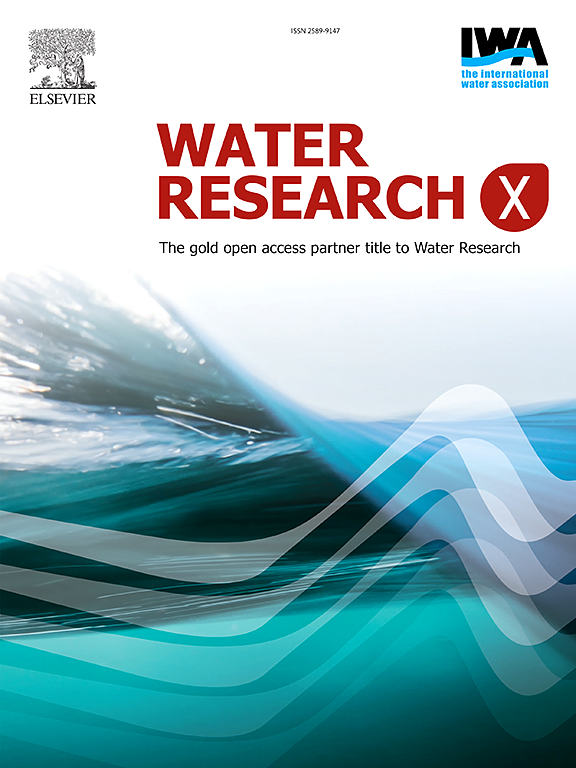探索跨多个智能配水系统的深度学习泄漏检测模型:使用AMI仪表检测泄漏大小
IF 8.2
2区 环境科学与生态学
Q1 ENGINEERING, ENVIRONMENTAL
引用次数: 0
摘要
许多深度学习(DL)模型已被开发用于供水系统(WDSs)的泄漏检测。然而,关于各种wds的可检测性和最小可检测泄漏大小的知识仍然严重缺乏。为了解决这些研究空白,本研究探讨了跨11个智能wds的DL泄漏检测模型的性能。利用先进计量基础设施(AMI)测量结果与经过校准的水力模型(即数字孪生模型)预测结果之间的差异得出的空间分布压力响应图像,采用卷积神经网络(CNN)来识别泄漏。对每个WDS评估十个泄漏大小,并计算三个性能指标(召回率、精度和F1分数)来评估CNN的可检测性和可检测泄漏大小。分析表明,无论是面向传输还是面向分布,深度学习模型的检测能力都受到WDS类型的高度影响。由于压力响应图像在正常和泄漏条件下无法区分,前一种网络在识别泄漏方面表现出较低的准确性。另一方面,后一种网络通常可以获得更高的精度和召回结果,并且可以检测到较小的泄漏。此外,最小的可检测泄漏尺寸对WDS结构参数(管道直径和长度)比系统液压(系统需求)更敏感。沿着泄漏流动路径检查管道特性为确定泄漏的可探测性提供了最有用的信息。本文章由计算机程序翻译,如有差异,请以英文原文为准。

Exploration of deep learning leak detection model across multiple smart water distribution systems: Detectable leak sizes with AMI meters
Numerous deep learning (DL) models have been developed for leak detection in water distribution systems (WDSs). However, significant lack of knowledge still remains concerning their detectability and the smallest detectable leak sizes across various WDSs. To address these research gaps, this study explores the performance of a DL leak detection model across eleven smart WDSs. A convolutional neural network (CNN) is employed to identify leaks using the spatially distributed pressure response images derived from the difference between advanced metering infrastructure (AMI) measurements and predictions from a well-calibrated hydraulic model (i.e., digital twin). Ten leak magnitudes are evaluated for each WDS, and three performance metrics (recall, precision, and F1 score) are calculated to assess the detectability and the detectable leak sizes of the CNN. The analysis reveals that the DL model's detection ability is highly impacted by WDS type, whether transmission- or distribution-oriented. The former networks exhibit low accuracy in identifying leaks due to the indistinguishability of pressure response images between normal and leak conditions. On the other hand, the latter networks generally achieve higher precision and recall results and can detect smaller leaks. Moreover, the smallest detectable leak sizes are more sensitive to WDS structural parameters (pipe diameter and length) than system hydraulics (system demand). Examining pipe characteristics along the leakage flow path provides most useful information in determining the detectability of leaks.
求助全文
通过发布文献求助,成功后即可免费获取论文全文。
去求助
来源期刊

Water Research X
Environmental Science-Water Science and Technology
CiteScore
12.30
自引率
1.30%
发文量
19
期刊介绍:
Water Research X is a sister journal of Water Research, which follows a Gold Open Access model. It focuses on publishing concise, letter-style research papers, visionary perspectives and editorials, as well as mini-reviews on emerging topics. The Journal invites contributions from researchers worldwide on various aspects of the science and technology related to the human impact on the water cycle, water quality, and its global management.
 求助内容:
求助内容: 应助结果提醒方式:
应助结果提醒方式:


